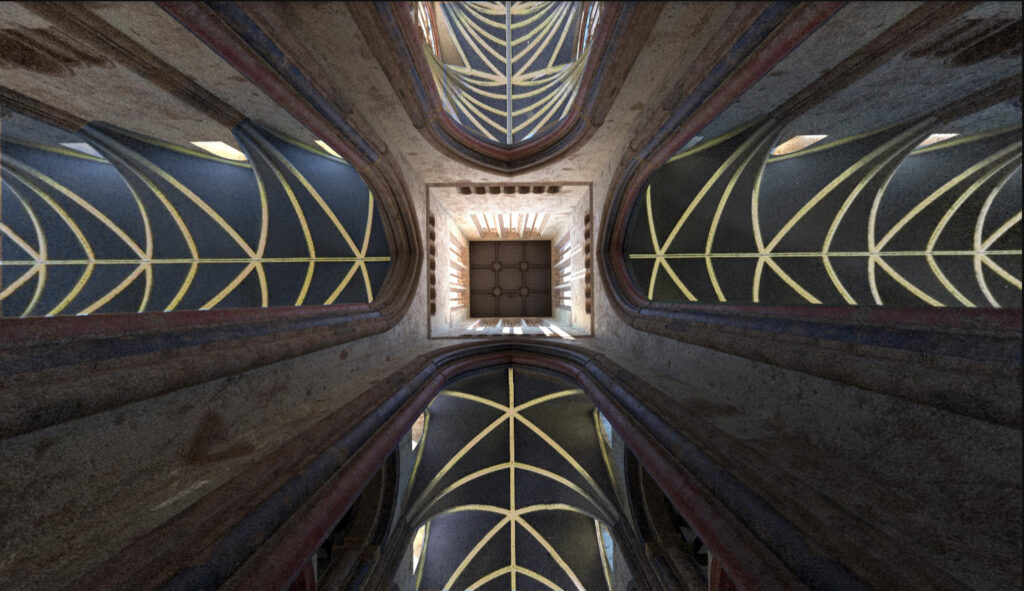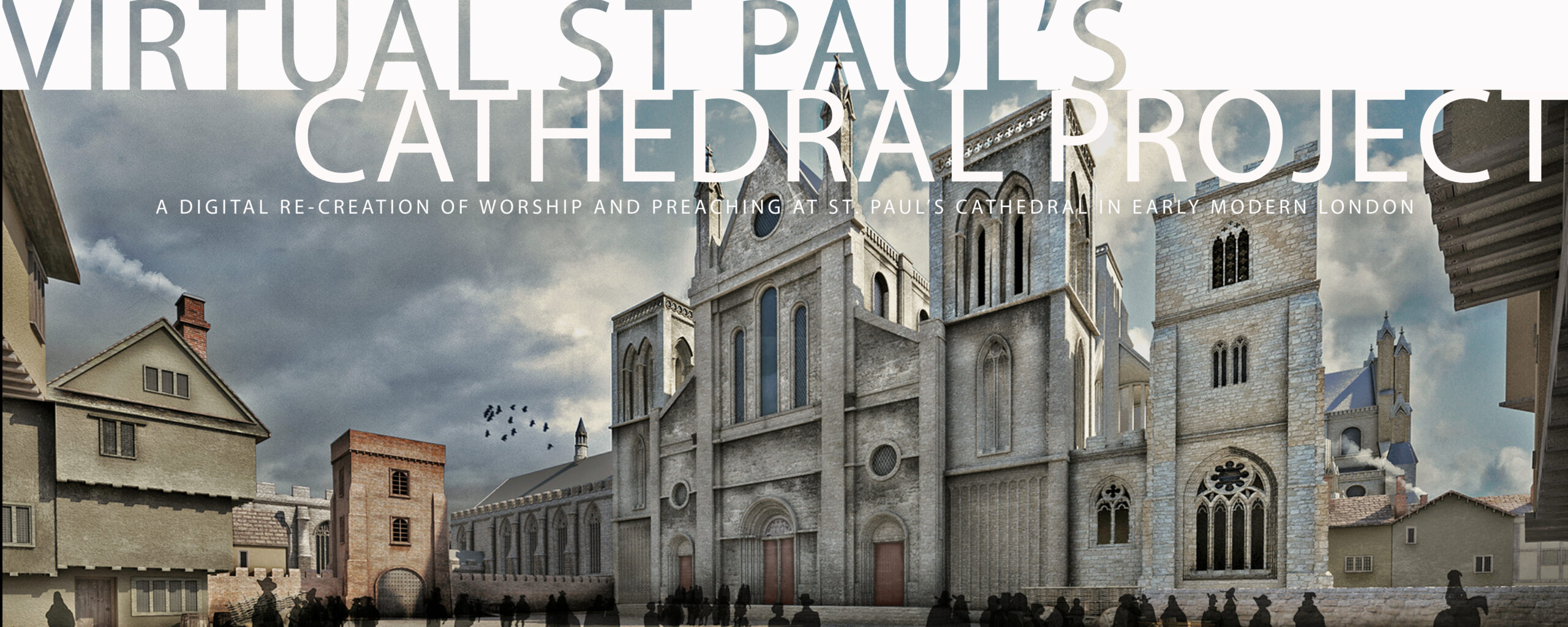
HEAR THE ACOUSTIC MODEL
While our acoustic model of St Paul’s Cathedral includes the entire building, our chief focus has been on the Choir of the Cathedral, where worship services were conducted. The basic shape of the Choir is a rectangle measuring roughly 240 feet long and 84 feet wide, with the central aisle measuring 42 feet wide. The section of the Choir occupied by the Choir Stalls was about 33 to 35 feet long. Overhead, the height of the ceiling above the floor changed as one moved eastward. To get to the floor of the west end of the Choir from the Crossing, one had to climb a set of steps, a distance of about 12 feet. So the internal crown of the vault of the Choir above the heads of folks sitting or standing among the Choir Stalls was about 90 feet above the floor.
To approach the Altar area, one had to ascend another set of steps, perhaps another 12 feet, so the internal crown of the vault of the Choir above the heads of folks standing or kneeling at the Altar was about 78 feet. Unlike the acoustic model we created for the Paul’s Cross Project, the model for the Cathedral Project includes a ceiling over the Choir and also a change in the height of the ceiling relative to the floor, due to the steps that take one up a couple of feet or so east of the Choir Stalls.
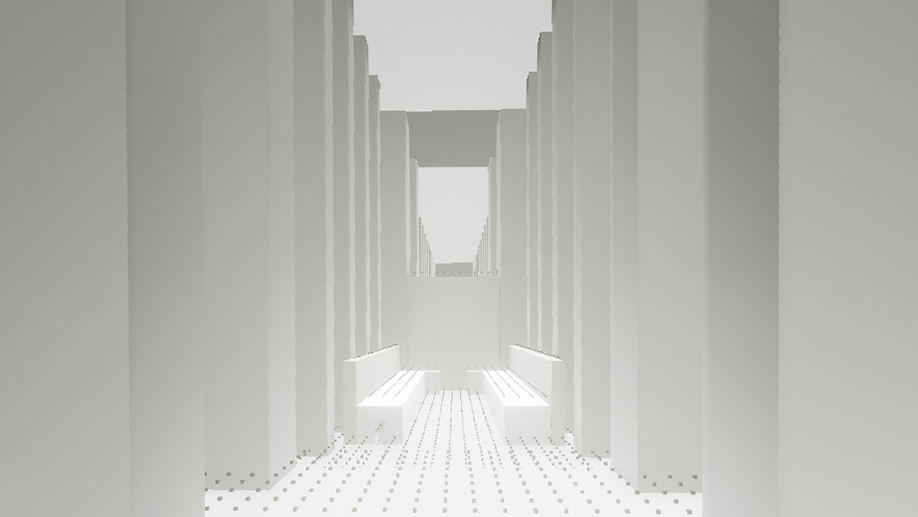
We chose five listening positions as the basis for our auralizations of worship services in the Choir of St Paul’s Cathedral. These five listening positions are marked with red letters on the floor plan above. To experience differences among the five listening positions, click on the image below to play a 2-minute video that moves from one of these listening positions to another.
To explore differences in sound more thoroughly and to experience the difference between the original, anechoic recording and the auralized recording for each listening position, try out the sound files inserted below. Here, we describe each listening position and explain why we chose that spot as one of our basic listening positions.
With each description of a listening position, there is a short audio clip of the same moment in the Service of Matins on Easer Sunday as heard from that listening position. Below the descriptions of the five listening positions are a collection of more brief excerpts from this Service, clustered to enable easy comparison of the effects of differences in acoustic properties for each listening position.
Here is the original recording:
Position A is the Dean’s Stall, where John Donne sat when he attended worship services in the Cathedral, presumably daily, except when he was traveling, perhaps to visit the parishes for which he was the (absentee) rector.
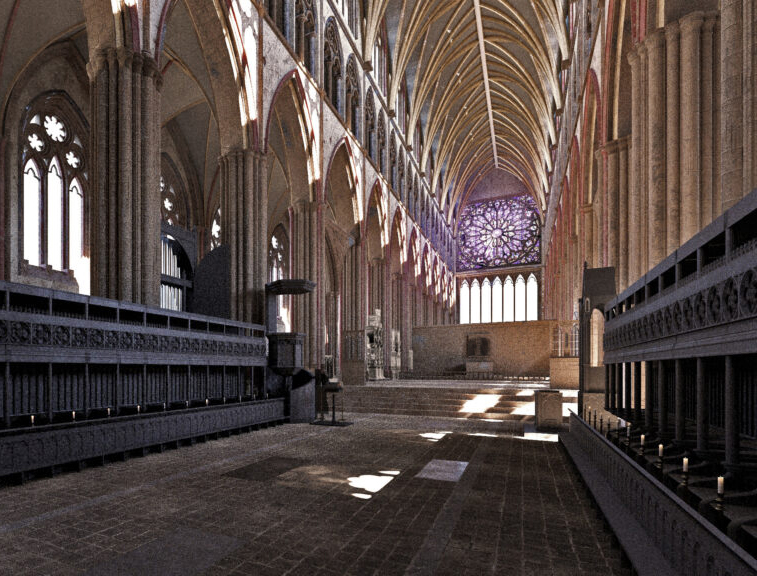
Here is the same recording as heard from Position A:
Position B is midway through the Choir Stall area, the area where the Choir stood to perform its part in Divine Service.
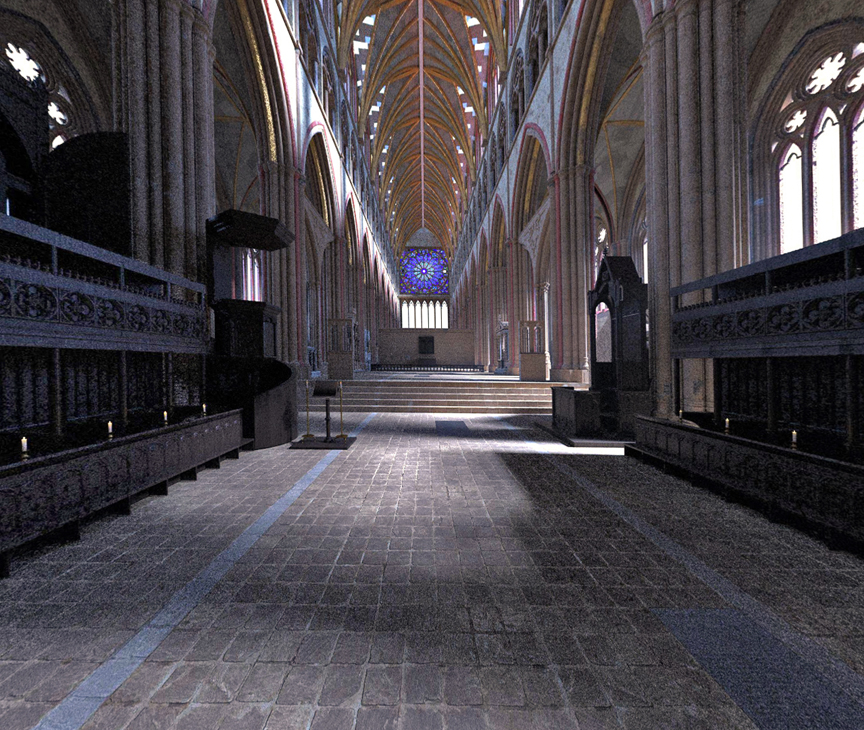
Here is the same recording as heard from Position B:
Position C is as the east end of the Choir Stalls, where the organ, pulpit, lectern, and prayer desk were located, close to the official seat, or cathedra, of the Bishop of London.
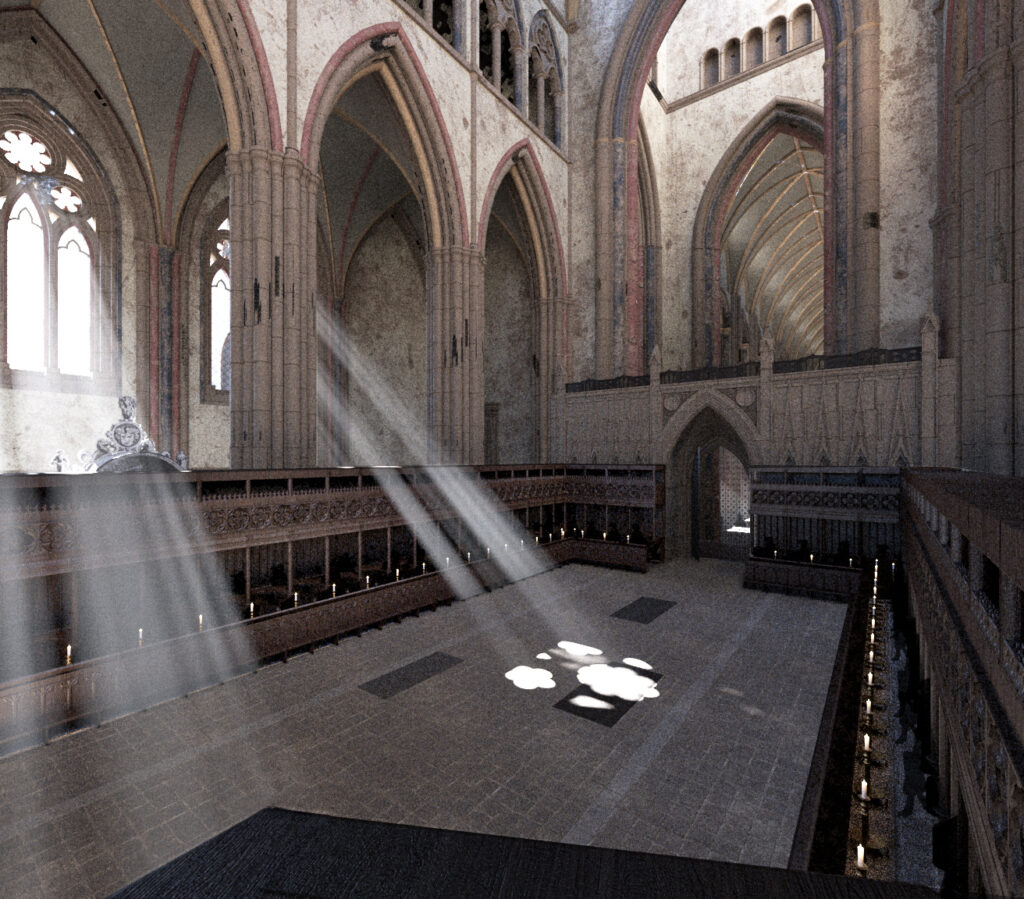
Here is the same recording as heard from Position C:
Position D is in the midst of the platform leading from the Choir Stall area to the area around the Altar.
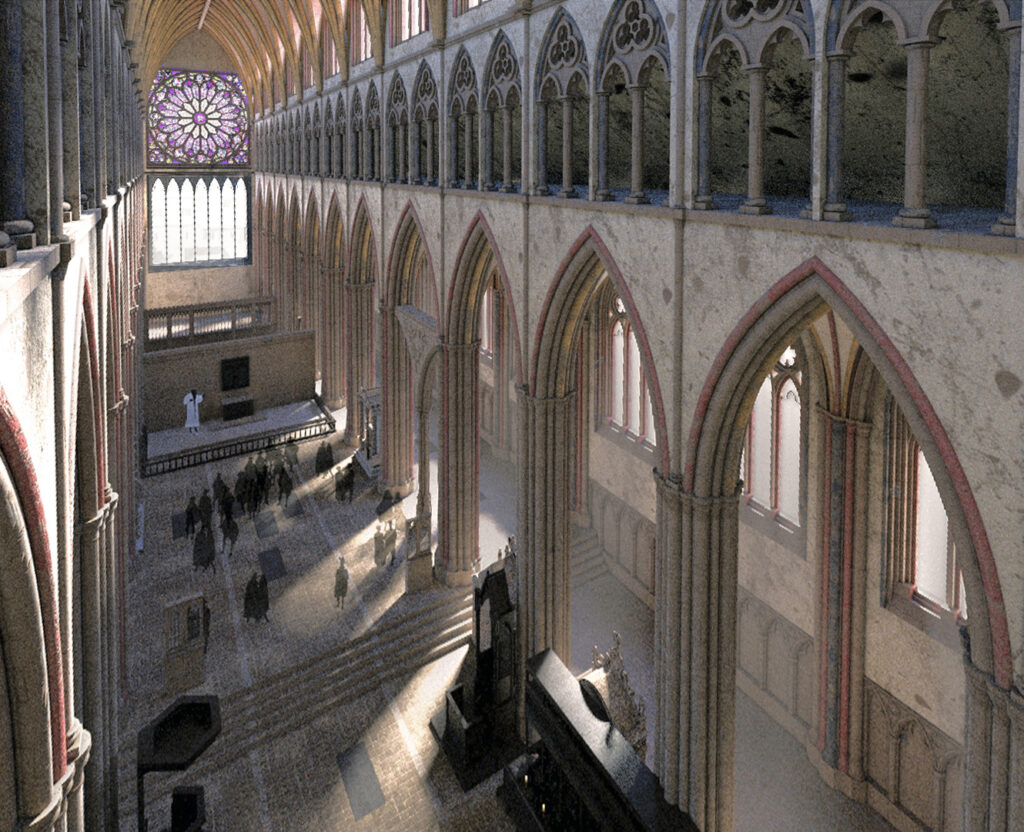
Here is the same recording as heard from position D:
Position E is in the south aisle of the Choir, an area where people stood for Divine Service when they found the Stall area already full upon their arrival.
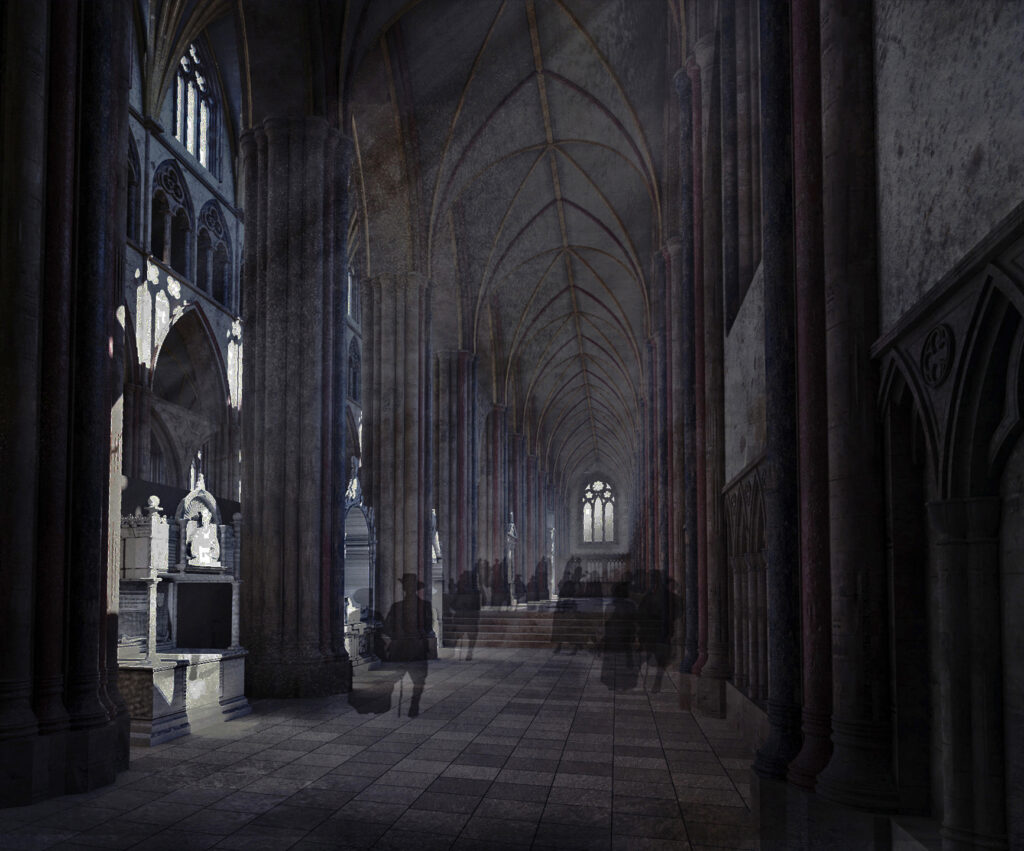
Here is the same recording as heard from position E:
Position F is in front of the altar. In the recordings of Holy Communion, the listening area switches to Position F when people have come forward to receive the bread and wine of Holy Communion and kneel at the altar rail awaiting their turn to receive.
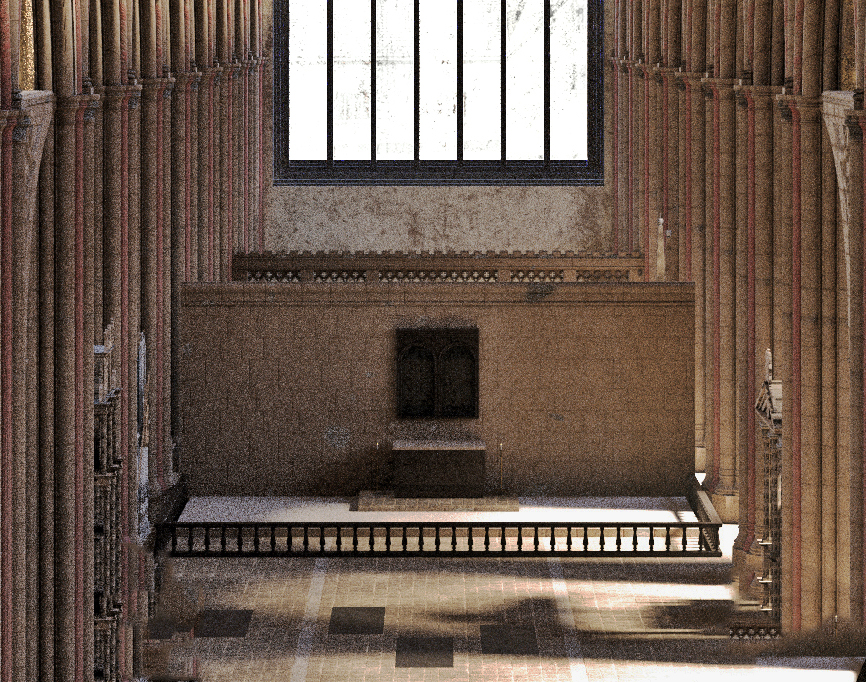
Listen for the sound of Position F in the Service of Holy Communion. The transition from all of the five Listening Positions to Position F is marked by a short period of crowd sounds that suggest the movement of members of the congregation as they come forward to the altar to receive the bread and wine of Communion.
In the selections below, we get to hear segments of the Easter Morning Prayer service from the first five named positions, for convenient comparison of the differing sound qualities. In each case, the first link is to the original recording. The second through sixth links are to the same recording but as heard, after going through the process of auralization, from the five different listening positions. Selections include spoken word, chant, and both choral and organ music.
Bells, Opening Sentences, Confession, Lord’s Prayer
Original recording
Position A
Position B
Position C
Position D
Position E
Precis and Responses
Original Recording
Position A
Position B
Position C
Position D
Position E
Jubilate Deo
Original Recording
Position A
Position B
Position C
Position D
Position E
Precis and Responses, Lord’s Prayer, Versicles and Responses
Original Recording
Position A
Position B
Position C
Position D
Position E
Anthem — Sing Joyfully (William Byrd)
Original Recording
Position A
Position B
Position C
Position D
Position E
